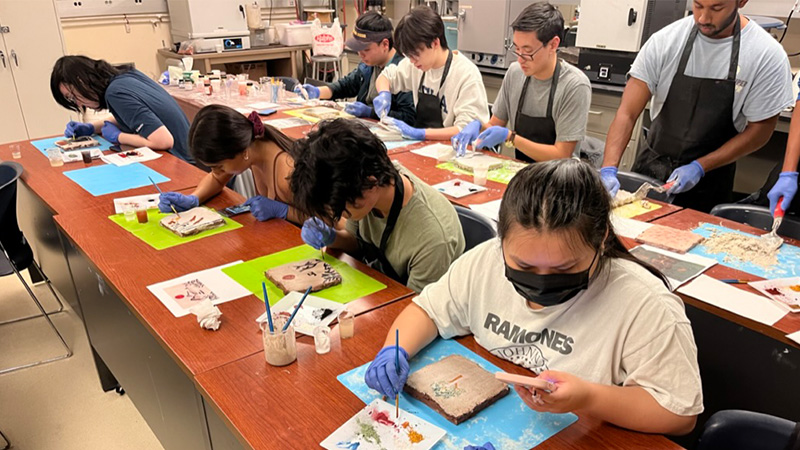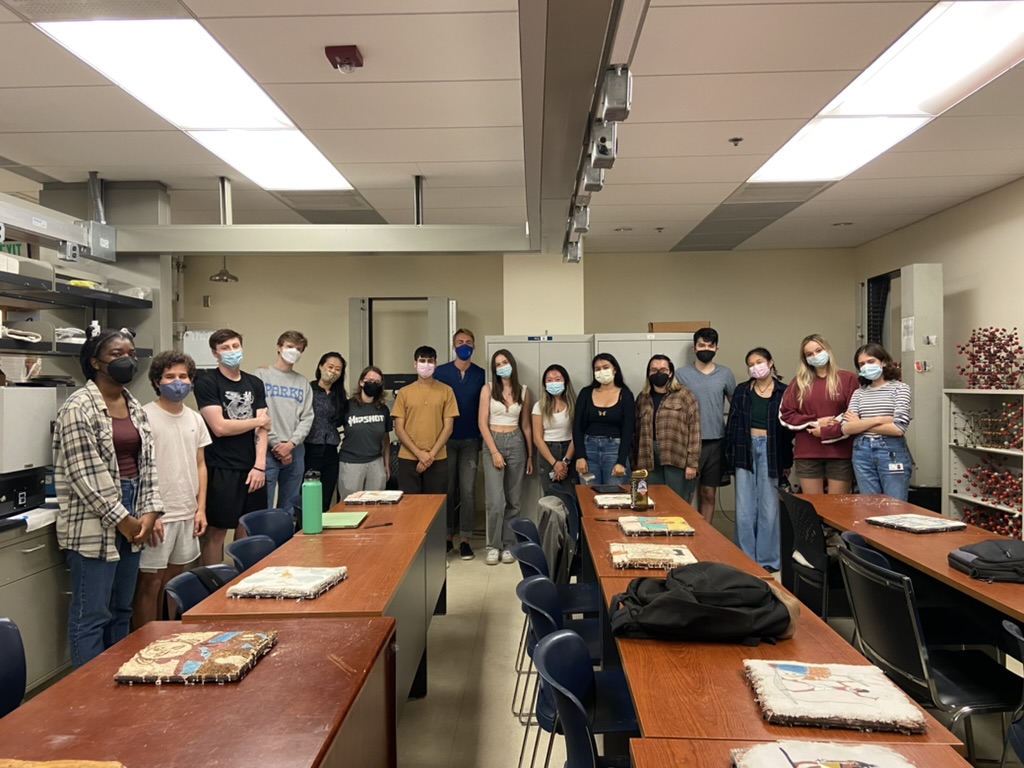Materials Science Class Combines Art History with Ancient Materials Studies
Interdisciplinary 5-unit course offers seminar, laboratory and outside study components

Courtesy of Ionna Kakoulli
MAT SCI 33W students practiced mimicking ancient mural techniques
Originally posted on UCLA Newsroom
Ioanna Kakoulli, a professor of materials science and engineering at the UCLA Samueli School of Engineering, is helping students connect the dots between materials science, archaeology and art through the study of ancient materials and technology.
MAT SCI 33W: Materials Structure and Technology in Archaeology and Architecture is taught by Kakoulli every fall quarter. Students taking the course learn to think like an art detective, using their acquired knowledge to help deduce the stories behind ancient works.
“What’s truly exciting about this course is that you will be learning through reverse engineering processing, exploring ancient engineering materials and their micro/nanostructure, physical, chemical and mechanical properties,” Kakoulli said. “You’ll discover how ancient societies developed technology and innovation to create materials and structures that are still standing today.”
“What’s truly exciting about this course is that you will be learning through reverse engineering processing, exploring ancient engineering materials and their micro/nanostructure, physical, chemical and mechanical properties,” Ioanna Kakoulli said.
The course explores three classes of materials and composites — vitreous materials, building material binders, and pigments and colorants. Students get to work with materials such as ceramics, glass, lime-based mortars, concrete, as well as natural and synthetic pigments.
MAT SCI 33W is also designed to help students develop research, writing and critical thinking skills while introducing them to topics and ideas they would not otherwise learn. The course is structured to appeal to a diverse group of students, including those studying outside of science, technology, engineering and mathematics.
“The part of the class that surprised me the most was how interesting I found the inner workings and structures of the various forms of antiquity,” said Evan Titus, a third-year economics student. “My favorite part of the class was the wall paintings, which we did toward the end of the quarter. Not only was it extremely enjoyable due to the creative side of the exercise, but also how it took me greatly out of my comfort zone.”
For fourth-year art history student Alisala Nunes, who previously majored in materials engineering before transferring to UCLA, the course offers an opportunity to combine her passions for art history and materials engineering.

Courtesy of UCLA Samueli
Students photographed from last fall’s MAT SCI 33W course exploring the science behind ancient art
“I was really excited to learn about all the applications of material science in the world of material culture,” Nunes said. “Understanding ancient materials and technologies can allow us to solve some of the problems in our modern world, and of course, this knowledge also enables us to continue to preserve important works of art and architecture that exist around the world.”
A native of Cyprus, a small island nation in the Mediterranean Sea, Kakoulli grew up in a region filled with well-known archaeological sites spanning thousands of years and different civilizations.
With her interdisciplinary background in materials chemistry, conservation and archaeology, Kakoulli takes a holistic approach to researching and teaching about ancient materials. She employs scientific and engineering methods to reveal the underlying properties of ancient materials that have enabled them to endure thousands of years of civilization.
Already full as of July 5, MAT SCI 33W satisfies both Writing II and the physical science general education requirements at UCLA. The course offers an alternative option for students who wish to fulfill their required curriculum without taking a humanities-focused course.
“While the lecture materials and labs were fascinating and fun to carry out, what really made so memorable was professor Kakoulli,” Nunes said. “It is obvious that she enjoys teaching the material, and she always brings positive energy to each class meeting.”
Riley de Jong contributed to this story.
